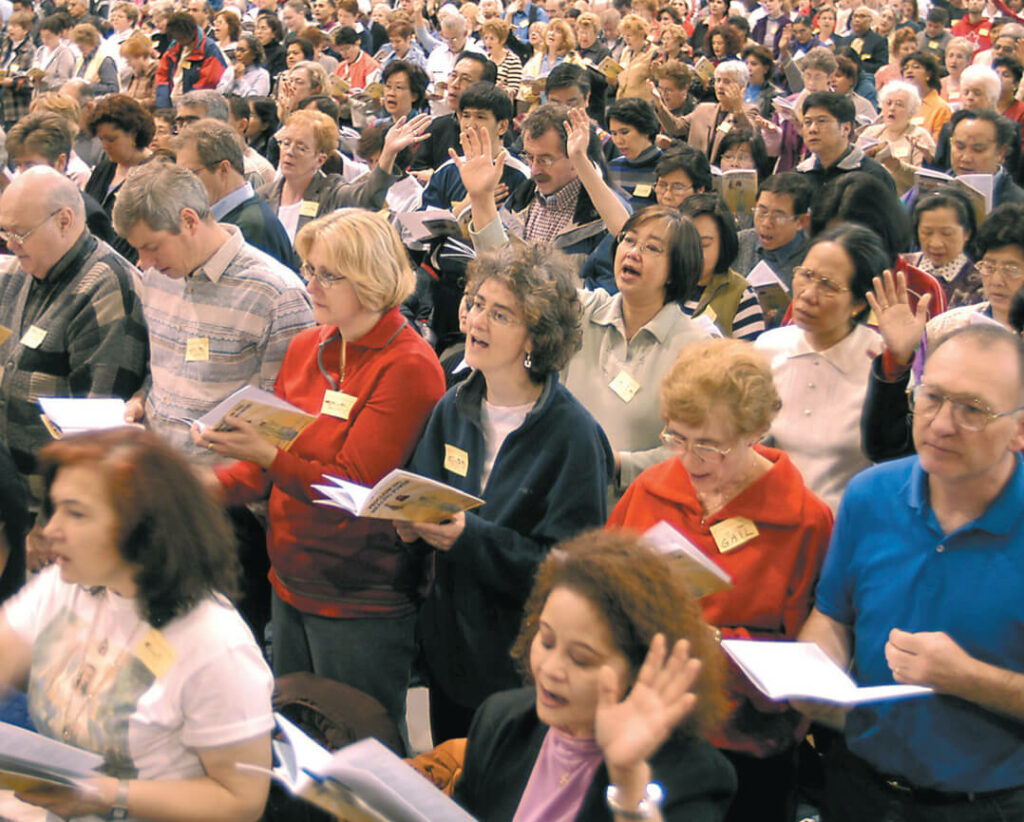
In Matthew’s gospel Jesus’ final act is commissioning eleven of his disciples to extend his mission beyond Israel to all peoples. If we could ask Jesus, as Matthew portrays him, what he could not help but live, Jesus would respond, “Teach.”
From the beginning to the end of his ministry, Matthew pictures Jesus as a wisdom teacher. In his farewell commission Jesus charges his disciples to keep teaching—to challenge all peoples to learn and live his word.
Matthew is listening and responding to his times in writing his gospel. The community for which he writes in the A.D. 80s is a community in transition.
As religious practice makes a transition from temple to synagogue, from a focus on sacrifice to a focus on written traditions, Matthew wants people to see Jesus as the new Moses, the new authoritative teacher and law-giver for a new era. Matthew arranges his gospel to establish Jesus and his followers as the authentic inheritors of ancient Israel’s traditions.
- To portray Jesus for our time, what characteristics would you emphasize?
- How is the Church today a community in transition?
Matthew uses mountains in several gospel scenes to underscore Jesus’ authority. Massive, unchanging mountains represent stability and authority. Mountain heights suggest closeness to God.
On a mountaintop Jesus refuses the devil’s temptation to rule the kingdoms of the world and chooses to serve God alone, the first commandment (4.8-10).
Mt. Sinai is where ancient Israel’s identity as the people of God begins. There Moses receives the old law of the ten commandments and seals a covenant between God and the people, who agree to keep the law. To identify Jesus clearly as the new Moses, Matthew has Jesus teach his new, authoritative law to his disciples on a mountain—his sermon on the mount (Matthew 5-7).
On the mount of transfiguration, three of Jesus’ disciples glimpse Jesus in glory with Israel’s greatest leaders—the law-giver Moses and the prophet Elijah. In another scene Matthew pictures Jesus on a mountain, healing the lame, maimed, blind, and mute—doing the healing word he teaches (15.29).
Fittingly, then, Jesus calls his disciples to a mountain at the end of Matthew’s gospel and commissions them to a world mission. In Jesus, Matthew and his community-in-transition see the messiah that the prophet Daniel envisions. The book of Daniel describes one like a human being who will come on the clouds and whose reign will not pass away (7.14). In Matthew’s gospel from birth to final commission, Jesus is God with us always.
- What makes Jesus an authoritative teacher for you?
Jesus commissions his disciples to baptize and teach his commands—clear purposes. Baptism is the life-giving, cleansing action that welcomes believers into the new life of the risen Jesus, the life the Son shares with Father and Holy Spirit.
The risen Jesus calling his disciples back to a mountain in Galilee clues us what they are to teach—the new law he taught on this mountain at the beginning of his ministry. In this sermon Jesus insists he has come to fulfill, not abolish, the old law and prophets. Jesus expects more than the law of Moses.
Jesus teaches his disciples to reconcile their angers before bringing gifts to God, to turn the other cheek, to go the extra mile, to love their enemies as well as their neighbors. He challenges his followers to be doers of his teachings in their lives (7.24).
Jesus teaches us a principle by which to judge our lives. What we do to the least—the hungry, thirsty, naked, homeless, sick, and imprisoned—we do to him (25.31-46). Today because Jesus’ first disciples fulfilled their commission and brought Jesus’ teachings to all peoples, we have the challenge in our lives to be doers of his word.
- What sermon does your Christian life teach?
The eleven gather in Galilee because two women disciples lead them from Jesus’ tomb to the mountain where they take up Jesus’ mission. Two Marys—Mary Magdalene and Mary, the mother of James and Joses—twice receive a commission to tell their brothers Jesus is risen. At the empty tomb an angel tells them to go and tell the disciples Jesus is risen from the dead and going ahead of them to Galilee, where they will see him (28.5-7).
The two Marys run with joy to tell the good news. On the road they meet the risen Jesus. They hold his feet and worship him. Then the risen Jesus commissions the women disciples, “Go and tell my brothers to go to Galilee. There they will see me” (28.10).
The eleven disciples go to Galilee because two women fulfill their commission. They energize the community to take up the mission of the risen Jesus. The women animate the disciples who fled at Jesus’ arrest rather than stand with him at the cross as they did (27.57-61). Some of the eleven doubt even as the risen Jesus commissions them.
A Roman road north to Damascus and south to Egypt crosses the mountain where Jesus commissions the eleven. Jesus sends them forth at this crossroads to the nations.
- Who energizes Jesus’ mission in our world today?
- How do women participate in expanding and energizing Jesus’ mission today?
